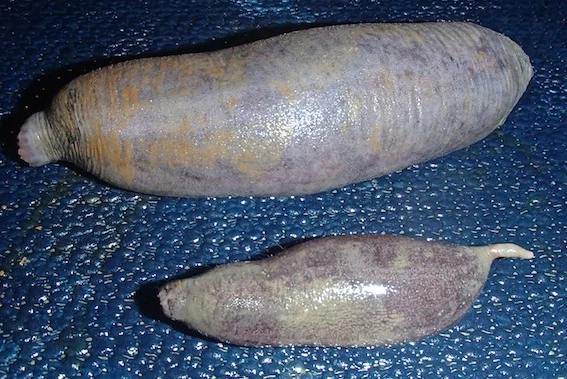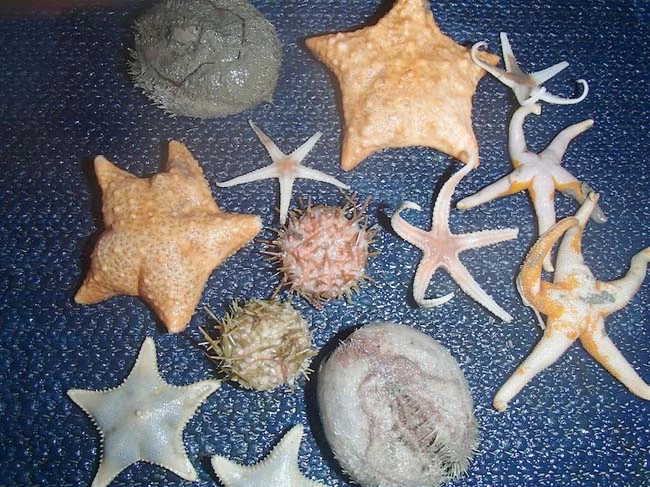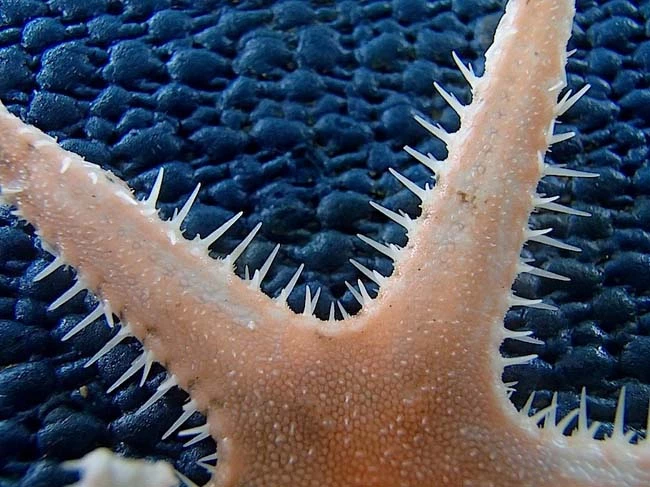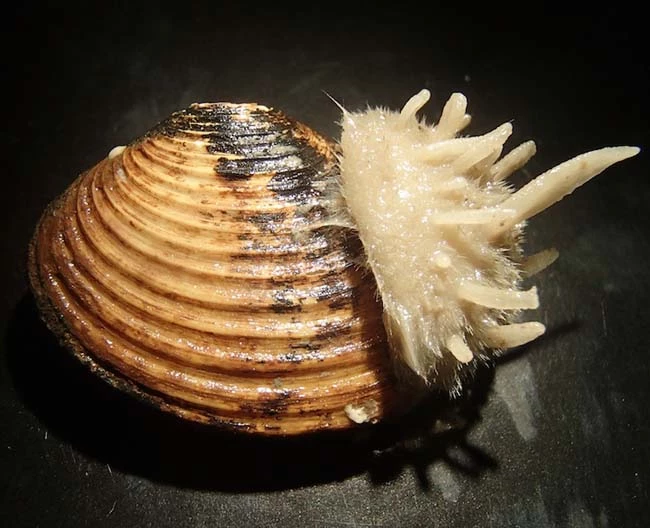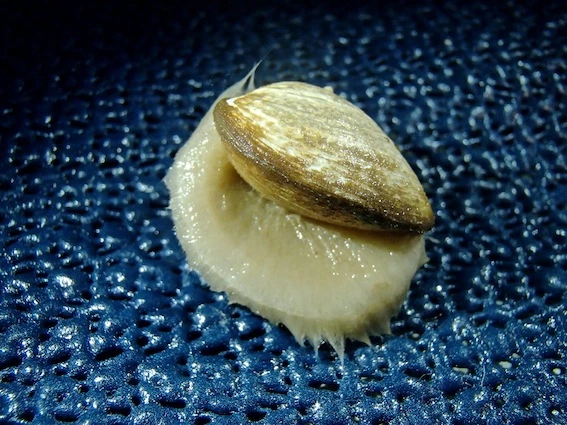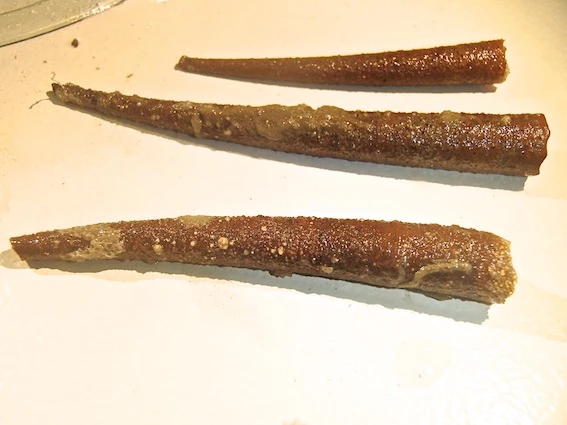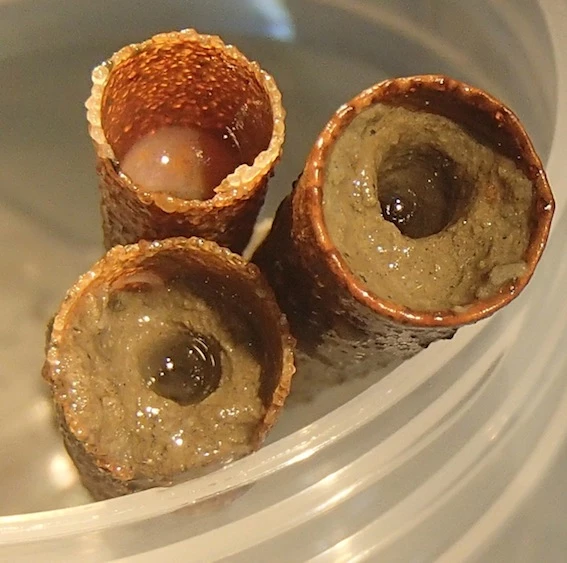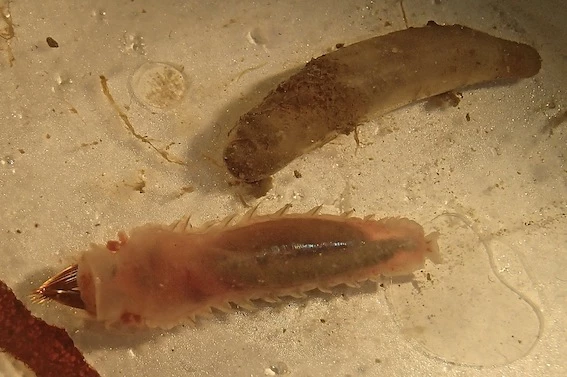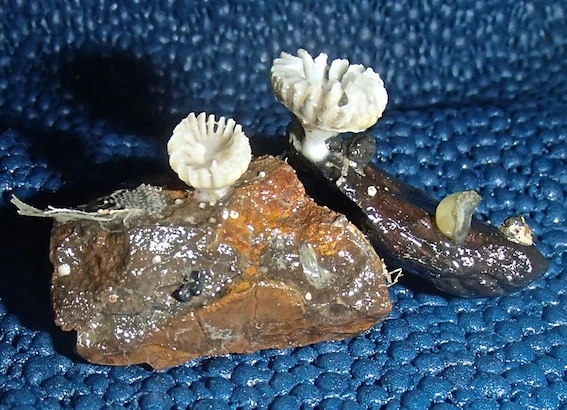Barents 5: a few animals
, 20 August 2013
#1, the black pudding [1 & 2]
This 10cm long, purple black sausage shaped creature was in a number of the beam trawls. It’s not at all obvious what it is at first but there are 15 tentacles around the mouth and you can just make out five bands running along the body. These numbers suggest an animal with symmetry of five and therefore a relative of starfish. It is indeed a sea-cucumber (holothurian) of some kind and it will live by ingesting mud and feeding on the detritus in it.
#2 starfish and sea urchins [3 & 4]
These represent some of the more colourful and larger animals taken by the beam trawl and the starfish are easily seen on the videos. The muddy urchins you will not see, as they are burrowing creatures that we know as sea potatoes. Close up some of starfish show good protection from being eaten by foraging fish.
#3, too close for comfort? [5 & 6]
In this expanse of mud there are few place for attached epifauna to settle so even the smallest hard surfaces are colonised. The clams Astarte and Bathyarca both live close to the surface of the mud and their hind portions are often colonised by minute foraminifera and tiny hydroids and polyps. Here both have been colonised by a sponge that has taken over a large part of the shell but despite this the clams are alive and well.
#4 who’s in my house? [7, 8 & 9]
These exquisite tusk like tubes are built out of sand grains by the polychaete worm Pectinaria and are very common in many of our samples. But when you look at the opening many tubes are filled with mud and have a central burrow. Opening these you will find the peanut-worm Phascolion has taken over, it will also do this in empty snail shells and worm tubes. The peanut-worm does not eject the polychaete but settles and grows in empty tubes. In image 9 the grey sausage shape is the peanut–worm and the pink worm is the Pectinaria. What happens when the peanut-worm outgrows the tube I do not know!
#5 is it a coral? [10]
Without a scale these little calcareous parasols could be mistaken for a coral colony but the largest does not exceed a centimetre in diameter and are attached to small pebbles. Without the microscope it is difficult to see what they are but underneath the arms of the parasol there are rows of little cavities each containing an individual animal. This is a bryozoan and is more familiar to us in a mat or frond form.

